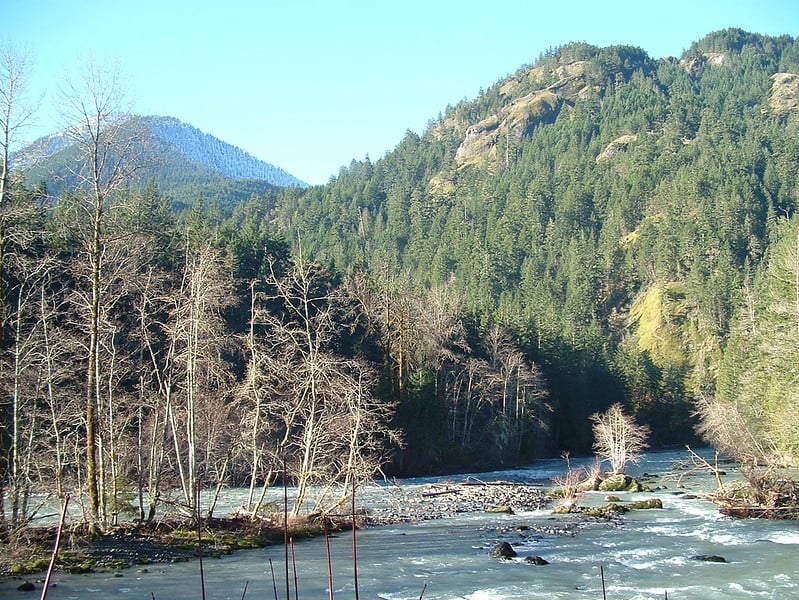What the Elwha River Teaches Us

Photo: NOAA’s National Ocean Service/Flickr
Peter Segall recently reported, in the Peninsula Daily News, that fisheries managers have observed high fish counts in the Elwha River. The Elwha dumps into Puget Sound, after flowing through Olympic National Park, west of Seattle. It was historically an important river for steelhead, chinook, and silver salmon. After the installation of two dams, however, “90 percent of the salmon habitat was lost” and there was a “98 percent decline in fish populations collectively” throughout the river system, according to Segall’s article.
The two dams on the river – The Elwha and the Glines Canyon Dam – were removed beginning in 2011, and ending in 2014. This was the largest dam removal project in history until the announcement of the Klamath Dam project, which has yet to finish.
Since 2011, fisheries managers have kept a close eye on the Elwha, to monitor its progress now that it’s once more a free-flowing river. What they’ve seen has been a dramatic increase in chinook and trout populations, in addition to silver salmon. In fact, the silver salmon fishery is robust enough that the Lower Elwha Klallam Tribe will be allowed a limited subsistence-use of the coho salmon, according to the Seattle Times.
This matters to anglers because the Elwha is a real-life, recent case study for what happens when dams are removed and rivers return to their natural state. Seeing such dramatic evidence like this could prove vital in restoring salmon and steelhead habitat throughout the Columbia River Basin, including the Snake River.
What makes the Elwha stand out, however, is just how quickly the turnaround has happened. Per the Seattle Times, fisheries managers counted more than 90% of coho salmon returning to spawn in the Elwha in 2012 and 2013 were hatchery fish. By 2021, fewer than 4% of observed coho were hatchery fish. This tells us that wild fish are indeed hardy enough to acclimate back to their historical homes, if only they’re given the chance.
The Elwha is unique in that most of its upper reaches lie in Olympic National Park, so the prime spawning habitat is protected from development. Even with that caveat, however, it’s clear that dam removal projects like this one work. Could the success on the Elwha be the blueprint for removing the lower Snake River dams and opening up that watershed to salmon and steelhead once more?
The lower Snake River dams are cited as the “main obstacle to steelhead and salmon recovery” in the Snake River system, per the conservation group Save Our Wild Salmon.
“Since the four lower Snake River dams were built over 60 years ago, Snake River salmon and steelhead returns have declined and remained far below the recovery goals necessary to remove them from the Endangered Species Act list,” reads the latest Hot Water Report from Save Our Wild Salmon’s blog. Without immediate and meaningful conservation actions, scientists predict we will lose these fish forever.”
While the Snake River isn’t protected like the Elwha, it’s an intriguing thought to realize that salmon and steelhead could quickly return to the river if they’re given the chance to do so. Perhaps the removal of the dams on the Klamath River will provide the final impetus to push this project forward.
Regardless – what’s happening on the Elwha is certainly a win for anglers, and we should certainly treat it as such.
Orvis Podcast: Montana Trout With Wade Fellin
Florida Keys in Hot Water











